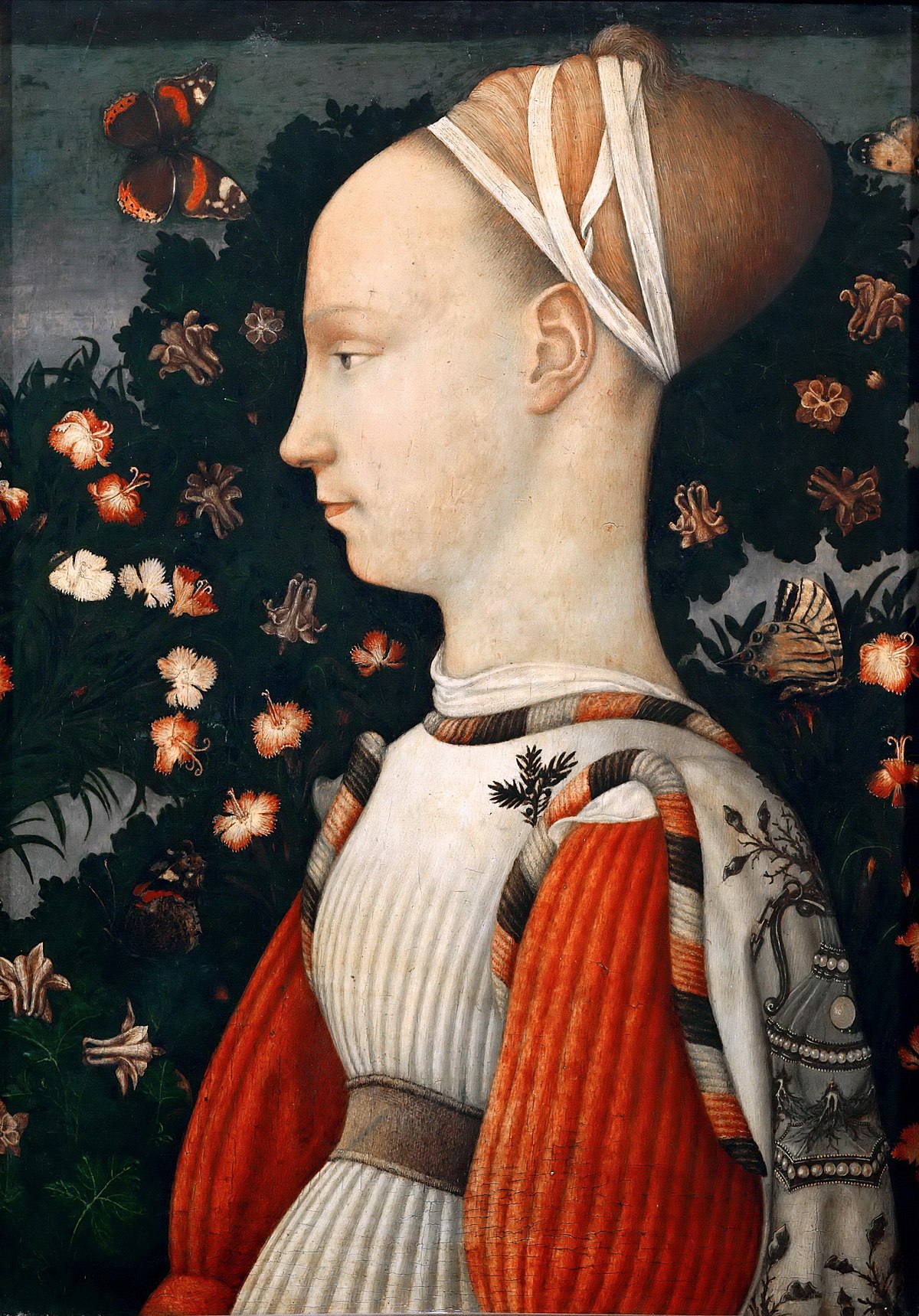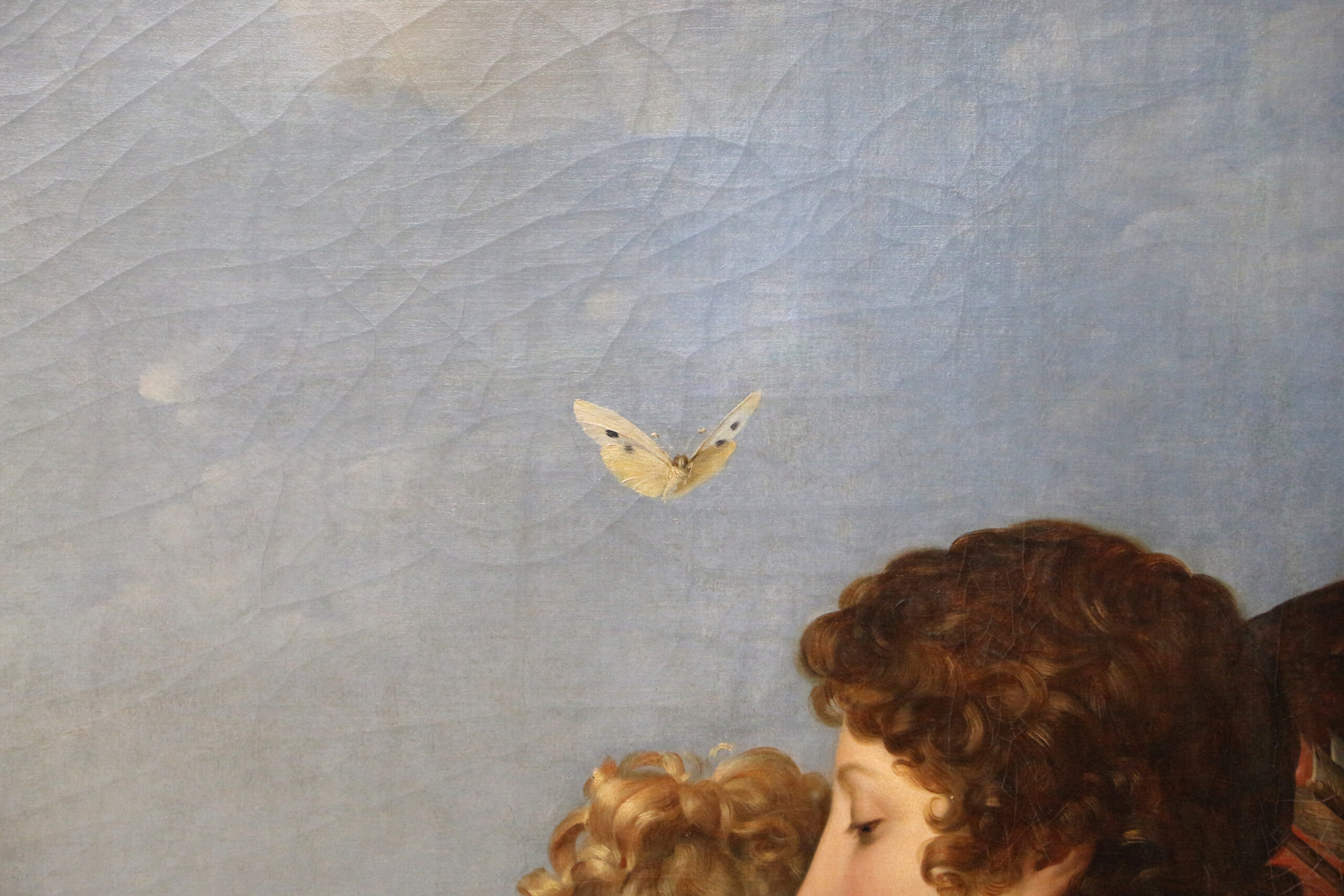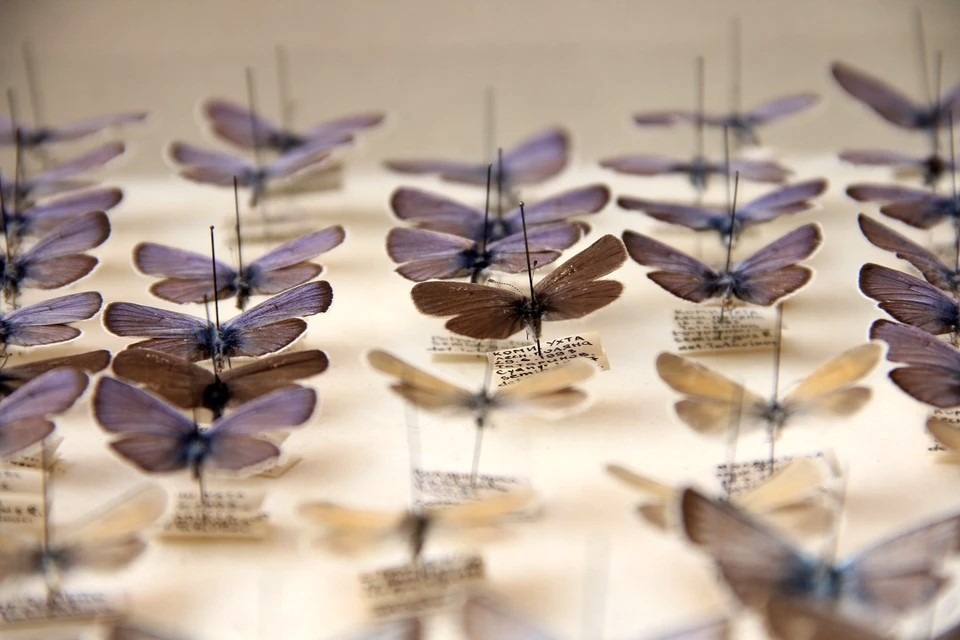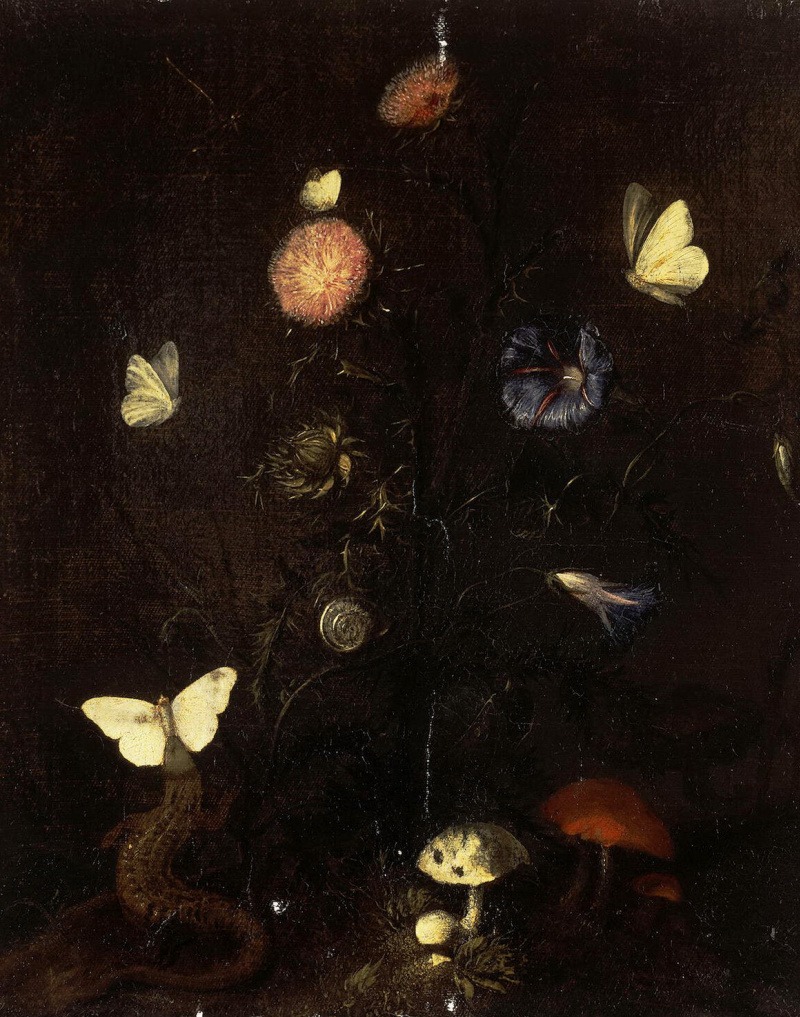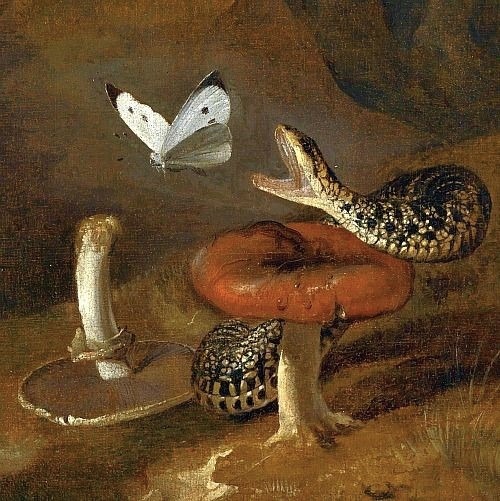Mesmerising beauty
There is nothing in a caterpillar that tells you it’s going to be a butterfly

Butterflies are frequent heroes of legends and myths of different nations. For the first time as a symbol of immortality, the butterfly appears in the ancient Egyptians, as well as in the myths of the Greeks and Romans, in ancient Rome butterflies were considered to be flowers that were plucked by the wind.
In the Egyptian Nile Valley and Sinai*1 no less than 61 species of butterflies have been accounted for. In tombs, images of butterflies have been found since the Old Kingdom, and particularly clear and beautiful ones remain in the necropolis of Saqqara*2. From the Middle Kingdom period, many butterfly amulets appeared, the most beautiful of which are found in Lisht, which was the stronghold of the pharaohs at that time. Perhaps the art of mummification in ancient Egypt arose just because of butterflies, or rather to say, from imitating the actions of a caterpillar turning into a butterfly.

Sculpture "Psyche".
Materials: Wood / Glass / Paper
Name of artist: IRÈNE SVIT
Ancient Greeks saw the image of a butterfly as a symbol of the soul: the Greek word psyche means both butterfly and soul. At the same time in antiquity, the butterfly could denote and the soul, which has already left the body – thus becoming a symbol of death. One of the myths of Ancient Greece tells about the appearance of butterflies: when the goddess Flora thought of presenting gifts to Zeus, she combined the crystal drops of morning dew, the delicate fragrance of spring plants and the purity of a mountain stream. Thus appeared a marvellous flower, the beauty of which could not be compared with anything in the world. Zeus, in a flurry of feelings, pressed his lips to the petals of the flower, which immediately turned into a beautiful butterfly and flew, driven by the light breeze.
In the 18th century, Europeans saw the life cycle of insects as an allegory of the Christian doctrine of the salvation of the soul. The butterfly, freed from its imprisonment, became the embodiment of the divine cycle, death and resurrection.

Sculpture "Psyche". Fragment
Materials: Wood / Glass / Paper
Name of artist: IRÈNE SVIT
In the greedy insatiable caterpillars, people recognised themselves, doomed to earthly labour in filth and suffering; in the cocoon – a kind of coffin in which nature encloses its creatures at the end of their earthly journey; and in the beautiful butterfly emerging into the world – life after death and the right to take off in free flight. It is to this idea that the butterfly in the hands of the infant Jesus or Madonna hints.
As a reminder of the resurrection of the soul, butterflies were also often depicted on portraits of people who died in their youth – as, for example, in the painting by Pisanello*3 Portrait of Ginevra d’Este. Italy, 1435-1440.
By the way, collecting butterflies, especially for church officials, was considered quite a decent hobby.

Sculpture "Psyche".
Materials: Wood / Glass / Paper
Name of artist: IRÈNE SVIT
Butterflies play an important role in the still lifes of the Dutch masters. The image of insects was a way to symbolically describe the struggle between good and evil, to create an image of salvation and resurrection that contrasted with the image of sin embodied in flies or dragonflies.
In Maria von Osterwijk’s painting “Vanitas “*4 the butterfly about to take flight tells us about the resurrection of the soul, while the fly symbolises evil. The hourglass measures the passage of time, inexorably changing the material world and always leading to death. A bouquet of various flowers and a skull are symbols of vanity and frailty of earthly existence. The inscription on the frontispiece of the book says: “We live to die, and die to live”. All this tells the viewer that the body is mortal, but the soul, leaving it, will live forever.
Japan sees the butterfly as the “soul of the living and the dead” as a result of the belief that the souls of the dead take the form of a butterfly when they go to the other world. The butterfly is also often used as a symbol of young girls whose beauty and blossom can be compared to the flight of a butterfly. It also symbolises joy and longevity. Two butterflies dancing around each other – a symbol of family happiness.

Sculpture "Psyche". Fragment
Materials: Wood / Glass / Paper
Name of artist: IRÈNE SVIT
The world of insects seems to be created for allegories. Moths rush towards the light, beetles burrow deeper, spiders weave their nets, and caterpillars transform into beautiful butterflies, mesmerising us with their silent flight and the beauty of their wings. Insects “tried on” many guises and crept onto artists’ canvases, where they took their place forever.
The miracle of transition from one creature to another has always fascinated people, who wanted to see in them a reflection of their own changes in the direction of the beautiful. People surrounded butterflies with legends and myths. Ancient ideas about them are connected with the most important concepts for man: life and death, love, happiness and freedom.
In my paintings the image of a butterfly is met repeatedly. I am fascinated by these creatures, fascinated by the beauty of their wings, colour, its transitions and texture. Butterflies are also closely connected with my memories of my childhood, sunny summer days, the feeling of tenderness and serenity.
The subtext of a work of art is extremely important, but not always, the artist must explain what exactly he wanted to express – it is necessary to penetrate the work, to unravel it.

Sculpture "Psyche". Fragment
Materials: Wood / Glass / Paper
Name of artist: IRÈNE SVIT
In my paintings, depending on the context, butterflies, like, by the way, other creatures or objects, can carry completely different meanings. They can show immortality, death, transformation or the soul. The painting establishes a dialogue with the viewer, leaving behind a reticence, a mystery. It gives you a choice, a theme to ponder and an opportunity to find the very essence of the painting.
*1 Mount Sinai is a mountain on the Sinai Peninsula in Egypt. According to the Bible, God appeared to Moses on this mountain and gave the Ten Commandments.
*2 Saqqara is a village in Egypt, about 25 kilometres south of Cairo. In it there is the most ancient necropolis of the capital of the Ancient Kingdom – Memphis. The name comes from the name of the god of the dead Sokar, the patron of necropolises. One of the features of the necropolis is the Serapeum, along the road to which statues of great Greek philosophers were placed in the Hellenistic period. Serapeum-a temple or other religious building dedicated to the Hellenistic god Serapis in Egypt.
*3 Pisanello is one of the most important painters of the Renaissance and early Italian Quattrocento.
*4 Vanitas – a genre of Baroque painting, allegorical still life, the compositional centre of which is traditionally a human skull. Such paintings, an early stage in the development of still life, were intended as a reminder of the transience of life and the futility of existence.
Butterflies are frequent heroes of legends and myths of different nations. For the first time as a symbol of immortality, the butterfly appears in the ancient Egyptians, as well as in the myths of the Greeks and Romans, in ancient Rome butterflies were considered to be flowers that were plucked by the wind.
BLOG
In the Egyptian Nile Valley and Sinai*1 no less than 61 species of butterflies have been accounted for. In tombs, images of butterflies have been found since the Old Kingdom, and particularly clear and beautiful ones remain in the necropolis of Saqqara*2. From the Middle Kingdom period, many butterfly amulets appeared, the most beautiful of which are found in Lisht, which was the stronghold of the pharaohs at that time. Perhaps the art of mummification in ancient Egypt arose just because of butterflies, or rather to say, from imitating the actions of a caterpillar turning into a butterfly.
Ancient Greeks saw the image of a butterfly as a symbol of the soul: the Greek word psyche means both butterfly and soul. At the same time in antiquity, the butterfly could denote and the soul, which has already left the body – thus becoming a symbol of death. One of the myths of Ancient Greece tells about the appearance of butterflies: when the goddess Flora thought of presenting gifts to Zeus, she combined the crystal drops of morning dew, the delicate fragrance of spring plants and the purity of a mountain stream. Thus appeared a marvellous flower, the beauty of which could not be compared with anything in the world. Zeus, in a flurry of feelings, pressed his lips to the petals of the flower, which immediately turned into a beautiful butterfly and flew, driven by the light breeze.
In the 18th century, Europeans saw the life cycle of insects as an allegory of the Christian doctrine of the salvation of the soul. The butterfly, freed from its imprisonment, became the embodiment of the divine cycle, death and resurrection.
In the greedy insatiable caterpillars, people recognised themselves, doomed to earthly labour in filth and suffering; in the cocoon – a kind of coffin in which nature encloses its creatures at the end of their earthly journey; and in the beautiful butterfly emerging into the world – life after death and the right to take off in free flight. It is to this idea that the butterfly in the hands of the infant Jesus or Madonna hints.
As a reminder of the resurrection of the soul, butterflies were also often depicted on portraits of people who died in their youth – as, for example, in the painting by Pisanello*3 Portrait of Ginevra d’Este. Italy, 1435-1440.
By the way, collecting butterflies, especially for church officials, was considered quite a decent hobby.
Butterflies play an important role in the still lifes of the Dutch masters. The image of insects was a way to symbolically describe the struggle between good and evil, to create an image of salvation and resurrection that contrasted with the image of sin embodied in flies or dragonflies.
In Maria von Osterwijk’s painting “Vanitas “*4 the butterfly about to take flight tells us about the resurrection of the soul, while the fly symbolises evil. The hourglass measures the passage of time, inexorably changing the material world and always leading to death. A bouquet of various flowers and a skull are symbols of vanity and frailty of earthly existence. The inscription on the frontispiece of the book says: “We live to die, and die to live”. All this tells the viewer that the body is mortal, but the soul, leaving it, will live forever.

Psyche
Name of artist: IRÈNE SVIT
Medium & materials: Wood / Glass / Paper
Dimensions: H 34, ⌀ 22.5 cm
Location & year created: Batumi, Georgia/ 2023



Psyche
Name of artist: IRÈNE SVIT
Medium & materials: Wood / Glass / Paper
Dimensions: H 40, W 29.70 cm
Location & year created: Batumi, Georgia/ 2023
Japan sees the butterfly as the “soul of the living and the dead” as a result of the belief that the souls of the dead take the form of a butterfly when they go to the other world. The butterfly is also often used as a symbol of young girls whose beauty and blossom can be compared to the flight of a butterfly. It also symbolises joy and longevity. Two butterflies dancing around each other – a symbol of family happiness.
The world of insects seems to be created for allegories. Moths rush towards the light, beetles burrow deeper, spiders weave their nets, and caterpillars transform into beautiful butterflies, mesmerising us with their silent flight and the beauty of their wings. Insects “tried on” many guises and crept onto artists’ canvases, where they took their place forever.
The miracle of transition from one creature to another has always fascinated people, who wanted to see in them a reflection of their own changes in the direction of the beautiful. People surrounded butterflies with legends and myths. Ancient ideas about them are connected with the most important concepts for man: life and death, love, happiness and freedom.
In my paintings the image of a butterfly is met repeatedly. I am fascinated by these creatures, fascinated by the beauty of their wings, colour, its transitions and texture. Butterflies are also closely connected with my memories of my childhood, sunny summer days, the feeling of tenderness and serenity.
The subtext of a work of art is extremely important, but not always, the artist must explain what exactly he wanted to express – it is necessary to penetrate the work, to unravel it. In my paintings, depending on the context, butterflies, like, by the way, other creatures or objects, can carry completely different meanings. They can show immortality, death, transformation or the soul. The painting establishes a dialogue with the viewer, leaving behind a reticence, a mystery. It gives you a choice, a theme to ponder and an opportunity to find the very essence of the painting.
*1 Mount Sinai is a mountain on the Sinai Peninsula in Egypt. According to the Bible, God appeared to Moses on this mountain and gave the Ten Commandments.
*2 Saqqara is a village in Egypt, about 25 kilometres south of Cairo. In it there is the most ancient necropolis of the capital of the Ancient Kingdom – Memphis. The name comes from the name of the god of the dead Sokar, the patron of necropolises. One of the features of the necropolis is the Serapeum, along the road to which statues of great Greek philosophers were placed in the Hellenistic period. Serapeum-a temple or other religious building dedicated to the Hellenistic god Serapis in Egypt.
*3 Pisanello is one of the most important painters of the Renaissance and early Italian Quattrocento.
*4 Vanitas – a genre of Baroque painting, allegorical still life, the compositional centre of which is traditionally a human skull. Such paintings, an early stage in the development of still life, were intended as a reminder of the transience of life and the futility of existence.

